Helmet Fit, Use in Skiing, & A Brief History of Helmet Technology
Introduction: I've put the following page together to help educate the SRT parents & guardians about helmets, including benefits and limitations. Each year, I've observed upwards of 30% of our racers wearing helmets that do not fit them appropriately. Most of these are due to the chin straps being either too loose or the child allowing the chin strap to rest in front of their chin. Helmets worn without use of a chin strap are much more apt to fly off during a crash.
My hope is that this page raises awareness of helmet issues among SRT racers, their importance, and that parents double check their racer's helmet fit and use.
If you have questions regarding helmets talk to Brian at Free Flight or one of the coaches from SRT.
-- Coach Mya
I. FITTING HELMETS
This is the most important information on this page.
SNELL Recommends Taking Time to Fit Helmets. According to the non-profit, to fit a helmet properly, take your time, test and retest the fit. Warning! Helmets that do not fit correctly may fly off the head or move out of position during a crash. Make sure the helmet cannot slip off or roll too far forward or backwards.
- Position the helmet on your head so that it sits low on your forehead; if you can't see the edge of the brim at the extreme upper range of your vision, the helmet is probably out of place.
- Adjust the chinstraps so that, when buckled, they hold the helmet firmly in place. This positioning and adjusting should be repeated to obtain the very best result possible. The procedure initially may be time consuming.
Other Fitting Recommendations
- A helmet with hard sides that extend over the ear is required by WIJARA for Giant Slalom.
- Make sure you child's helmet fits comfortably so they will want to wear it!
- Helmets should be comfortable, snug but not tight.
- Chin Strap: Check that the chin strap of the helmet is adjusted properly -- The chin strap should always remain under the chin, not in front. A secure fitting chin strap keeps a helmet from flying off in a crash -- There should be no more than two fingers between the chin strap and chin.
- Make sure that face coverings, (i.e. neck gators, bandanas, etc.) MUST be worn on the OUTSIDE of the chin strap, that is not between the chin and the chin strap!
- Helmets that have suffered a serious impact should be retired!
If you have any questions contact Brian at Free Flight or one of the SRT Coaches.
II. Modern Ski Racing Helmets -- Features and Certifications
FIS was slow to mandate the use of helmets in technical events. The world-wide governing body didn't require the use of helmets by junior racers until 2010, and not until 2013 did they mandate updated helmet designs. Finally, in 2015/16 FIS required helmet use at every level within the sport.
When searching for an alpine ski racing helmet, two technologies that are worth investigating are the BOA Fit System and MIPS Brain Protection System.
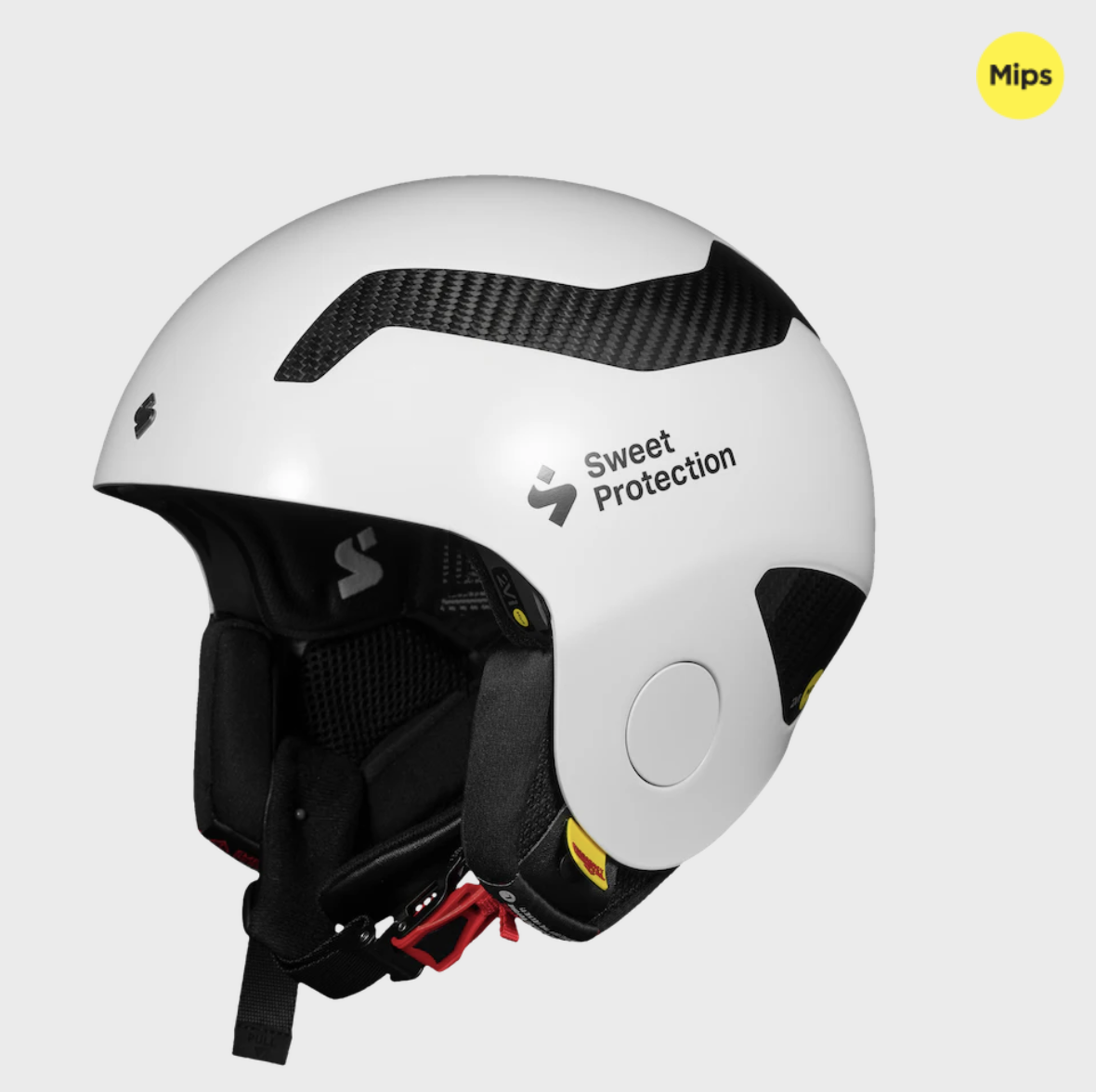
Above: A top of the line Sweet Protection's Volta World Cup Helmet ($650.00 Fall 2023) with a hybrid shell of Carbon fiber Polyamide fiber. The shell is lined with several internal impact shields. The MIPS system has a three layer liner that reduces rotational forces on impact.
Below: The Volata 2Vi Mips Race Helmet ($280 Fall 2023) provides a similar level of protection at less than half the price. It also comes with a chin guard for use in Slalom.
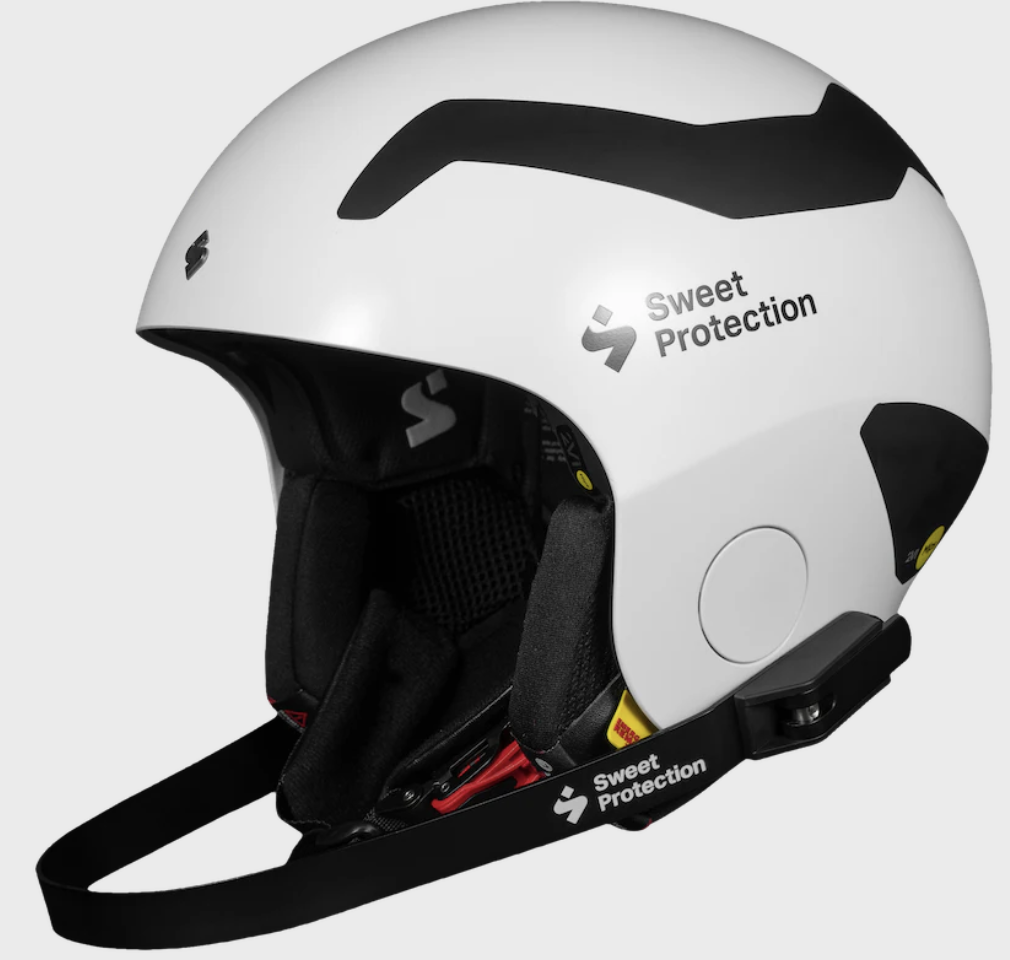
Over 30 years of research, engineering, innovation, and development provide today's skiers and racers with protection that's helped reduce the number of head injuries repoted by ski resorts by over 70% since 2010. (S.A.M. December 2022)
Use of the latest composites materials available have significantly improved modern helmet's capabilities to protect the user. Today, when racing in USS&S (formerly USSA) alpine events, every competitor and forerunner is required to use a helmet approved by the SGB, (U606.4). (Note, within WIJARA we do not require a FIS approved helmet, but I would highly recommend one.)
MIPS Helmet Technology
MIPS at first glance may look like a gimmick to sell more helmets, but after landing on my melon several times over the last 10 years, mainly from mountain bike crashes, I can attest first hand to the benefits of MIPS. MIPS is likely the most important development in Helmet Technology since the advent of new, lighter weight materials.
The MIPS system was developed by a Swedish Neurologist. In theory, MIPS is deceptively simple. If you look inside a MIPS-equipped helmet, you’ll notice a yellow inner liner of plastic between the contact pads and the helmets interior shell. That yellow layer is the Mips slip-liner, also known as a slip-layer – an accurate description as the layer allows the helmet to swivel in all directions 10 to 15 mm.
What Does MIPS Do?
Nearly all crashes result in some angular impact to the head, results in two impacts. The first is the outer impact between the helmet and object. The second impact is the soft tissue of the brain hitting the inside of the skull that results in a concussion. Research into this secondary impact lead to the development of the MIPS slip-layer, as researchers noted that dispersing the rotational force generated during a crash, even slightly, significantly reduced the secondary impact of the brain's soft tissue with the inner wall, the skull.
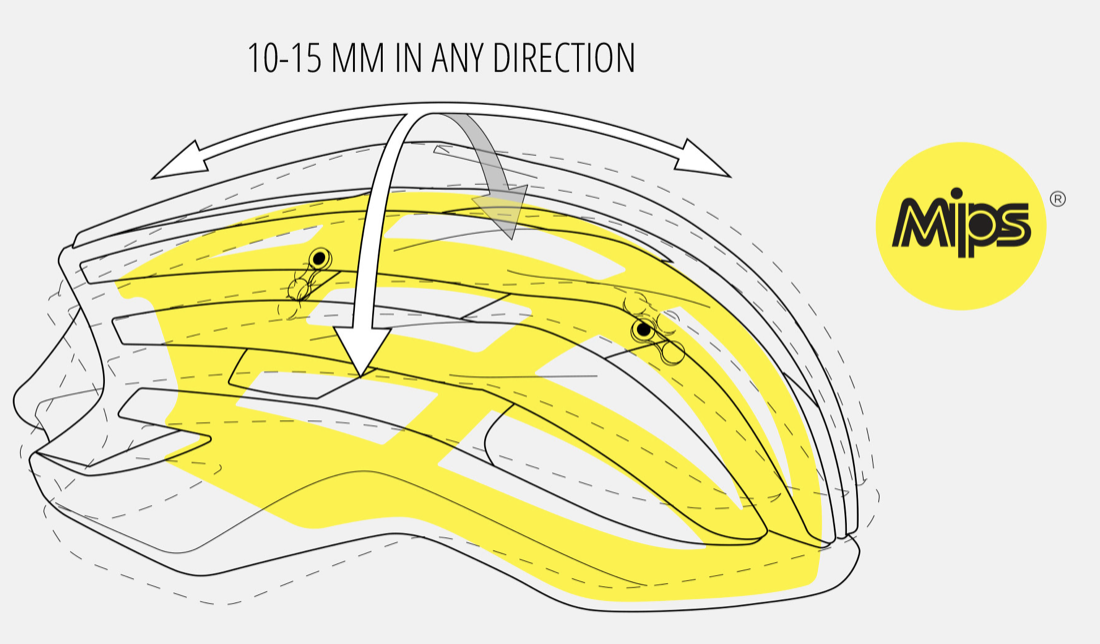
(Above: MIPS in action.)
BOA Fit System
The BOA Fit System allows for a helmet to be easily adjusted and secured on your child's head. As your child grows the BOA system will allow the helmet to adjust and provide a snug fit. The system is a common feature seen on most helmets available today. It's hallmark, is the 1 inch circular dial in the back that allows you to pull the back of the helmet in securely fitting it to a range of sizes.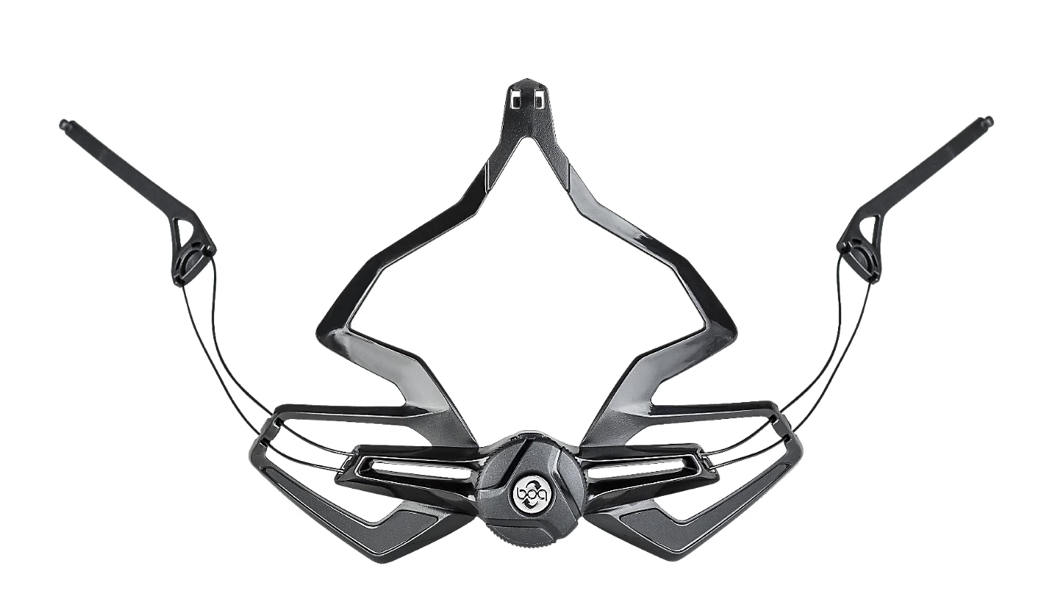
Not Necessary but Highly Recommended Certifications
WIJARA only requires that we use helmets that have a hard shell that extends over the ears for Giant Slalom events. I am assuming here that a vast majority of our racers will only have one helmet for both events. The USSA rule book states: "Helmets must bear a CE mark and conform to recognized and appropriate standards such as CEH.Din 1077, ASTM F2040, SNELL S98 or RS 98."
About Certifications
Not all certifications are the same. In general, helmet certifications break down into three categories. Minimal Standard, which is the bare bones lowest standard available, like those put forward by government agencies like the DOT for motorcycle helmets. Then there are the mid-level standards, the standards that require further refinement than the government issued standards. Finally, there are the gold standard certifications, such as SNELL that look out and certify only the best of bread protection based on available materials, science, and research available, which means they're consistently innovating and updating their standards.
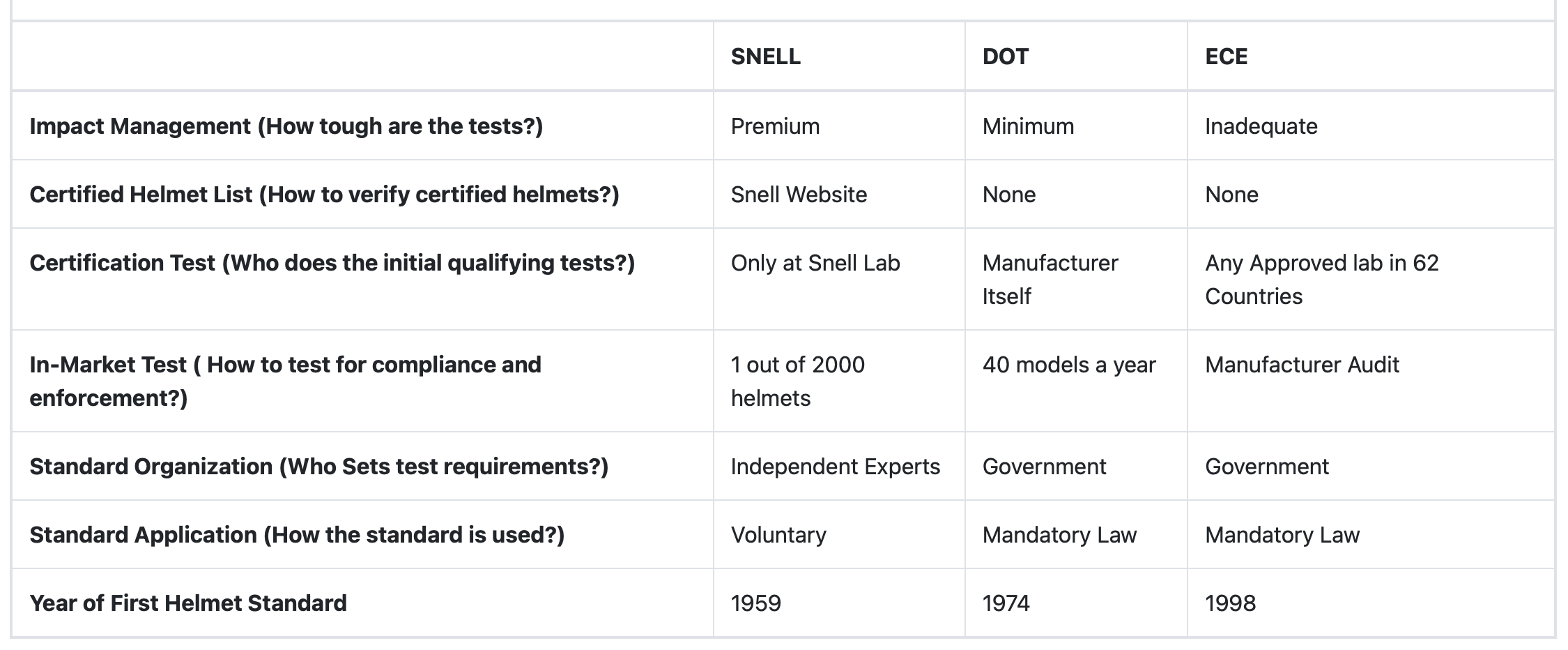
Helmet Limitations
Proper helmet use along with regular review and reenforcement of Safe Skiing Codes & Habits are the best strategy for staying safe while out skiing. That said, it's important to note that helmets are not designed or capable of protecting skiers from blunt force impacts with immovable objects, such as trees or lift towers. Therefore it's important to practice safe skiing tactics as your child grows, (see SRT's Safe Skiing Code.)
Take Aways:
- Make sure your child has a helmet that fits well, according to the fitting steps outlined above.
- Make sure your child is receiving regular training and reminding on Safe Skiing Code & Habits.
- Skiing will always contain risk and danger. Understanding and accepting the risks and dangers in skiing is one of personal choice & responsibility.
- Look out for emerging safety equipment. New materials and science are constantly being introduced into skiing these days. Tho early adopters may pay a steeper price, newer helmets with features like MIPS or BOE fit system do help protect racers.
- Consider getting a certified helmet.
If you have questions regarding helmets talk to Brian at Free Flight or one of the coaches from SRT. Please feel free to contact me if you find information that I should add or have other feedback.
Thank you for reading!
-- Coach Mya
